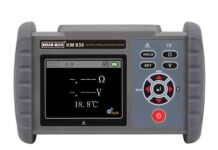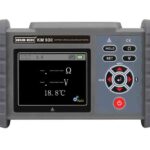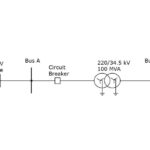
State-owned distribution utilities (DISCOMs) remain as the weakest link in the power sector value chain, thus, adversely affecting the demand prospects for the power generation companies as well as delaying in making payments on the power purchase dues. This is owing to their weak financial profile caused by high operating inefficiencies reflected from high AT&C losses (aggregate technical and commercial losses) and inadequate tariffs and subsidy in relation to the cost of supply. So, the government launched the Ujwal DISCOM Assurance Yojana (UDAY) in November 2015 with an objective of a financial turnaround of state-owned DISCOMs. Apart from an improvement in the operational efficiencies of DISCOMs and a reduction in the cost of power purchase, the scheme envisaged a significant state government support, mainly in the form of taking over of 75 per cent of the DISCOM debt (50 per cent in H2 FY2016 and 25 per cent in FY2017) by the respective state governments. State governments in 27 states and 4 UTs signed MoUs with the Ministry of Power for implementation of the scheme. Of this, debt restructuring was undertaken in 15 states, with bonds worth Rs 2.32 lakh crore, which have been issued by states towards refinancing the debt of the DISCOMs. This in turn has improved the DISCOMs’ liquidity profile to some extent and reduced their book losses.
Despite these measures, the median cost coverage ratio (ratio of revenues collected and the aggregate expenditure incurred by a DISCOM) for distribution segment continued to remain less than one, though improving from the levels seen during FY2013-FY2016. This is because of the slow improvement in lowering the AT&C loss levels and inadequate tariffs approved by the regulators in relation to the cost of supply for the DISCOMs. Also, the inadequate implementation of fuel and power purchase cost adjustment (FPPCA) framework by distribution utilities in many states have also adversely affected the credit profile of the distribution utilities. The UDAY MoUs set the AT&C loss target to be reduced to 15 per cent by FY2019 for most of the states, with some states being provided additional time to meet this target. As per UDAY website, the AT&C loss levels continue to remain significantly high in several states as compared to the target fixed. Furthermore, the loss levels in some of the states remain largely the same as against the loss reported in FY2015.
Another aspect of the UDAY scheme was the timely filing of tariff petitions by the DISCOMs and the issuance of tariff orders by the State Electricity Regulatory Commissions (SERCs). However, the tariff hikes proposed by the DISCOMs and approved by the SERCs for the past two to three years have remained lower than what was agreed under the UDAY MoUs, leading to a persistent gap between the average tariff and the average cost of supply, though reducing from the earlier years. The median tariff hike for the DISCOMs at the all India level has reduced from 8 per cent for FY2015 to 4 per cent for FY2016 and FY2017 and further to 3 per cent and 1 per cent for FY2018 and FY2019 respectively. The tariff hike is likely to remain subdued for FY2020 as well, given the limited or no tariffs hikes approved so far. This, along with the relatively high AT&C loss levels, is likely to slow down the process of financial loss reduction for the DISCOMs. This is also reflected in the delays in realising payments from the state distribution utilities for the power generating companies.
In this context, the distribution segment needs another round of intervention to improve the operation efficiency and achieve a sustainable financial improvement of the DISCOMs. As proposed in the amendments to tariff policy, the central government must enforce measures such as installation of pre-paid meters by the DISCOMs, which would improve billing and collection efficiency. In addition, the AT&C losses higher than a certain level (say 15 per cent) should not be allowed for determination of retail tariffs, thus forcing the DISCOMs to improve their efficiencies. Further, the state government and DISCOMs must consider the distribution franchising mechanism for improving billing and collection efficiency and controlling power theft, especially in high loss areas. Also, the state governments must ensure timely payments of electricity dues by the government departments. In addition, the direct benefit transfer (DBT) mechanism may be looked at as a viable option for subsidy payments. This is in view of the rising dependence on subsidy for state DISCOMs and delays in realising the same from the state governments. Overall, improvement in operating efficiency, timely pass-through of cost variations to the consumers and financial discipline in realising subsidy payments and dues from government departments remains crucial for achieving a sustainable improvement in DISCOM finances.




















